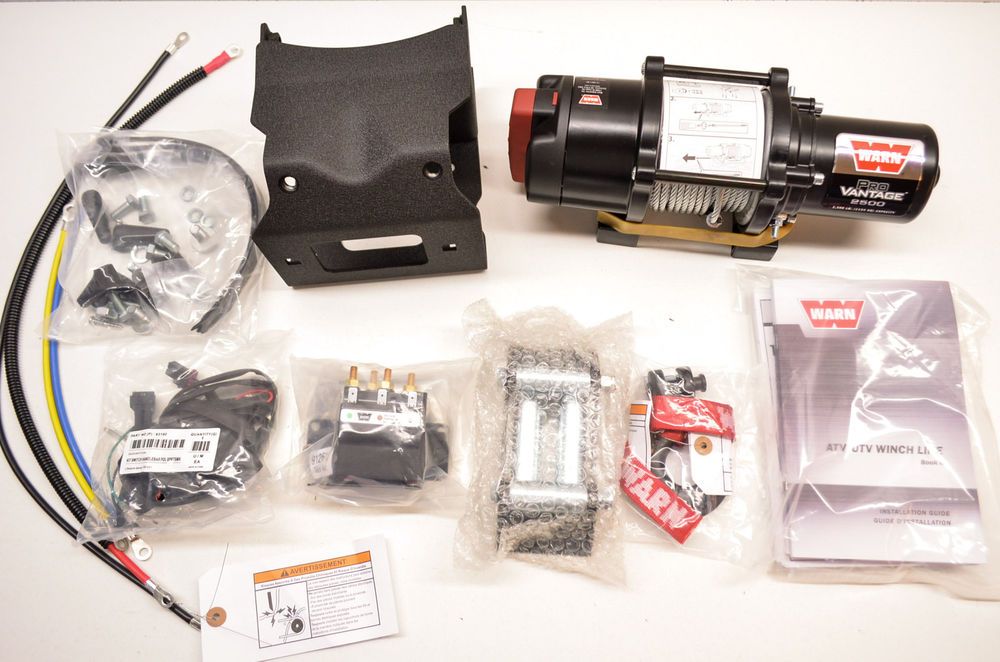MY ATV WINCH IS SLIPPING MY ATV WINCH IS OVERHEATING QUICKLY MY ATV WINCH WON’T ENGAGE OR DISENGAGE MY ATV WINCH ONLY TURNS IN ONE DIRECTION MY ATV WINCH TURNS VERY SLOWLY MY ATV WINCH SOMETIMES DOESN’T WORK AT ALL MY ATV WINCH IS ENTIRELY DEAD
Driving your ATV through challenging environments is one of the most thrilling experiences on Earth. But that thrill can turn to dread when you get yourself stuck in a deep bog or mud. Winches are a handy tool, then, for getting you out of a literally sticky situation. It’s important to make sure your winch is in good order before your head out for a ride, or you could find yourself in a whole heap of trouble.
There are quite a number of different potential issues you can have with a winch and many possible solutions. In this guide, we’ll look at each of the main problems and how to get your winch back to full usefulness.
If your winch is slipping under load, the gears of the winch may have been stripped due to incorrect use. The only way to be entirely sure is to disassemble the winch and inspect the gears. Replace gears as necessary.
You should expect some heat from a winch, but if it’s heating very quickly, then you have a problem. The winch motor may need to be replaced.
Sometimes, the winch motor end cap bushing is too tight, causing friction. You can use sandpaper to give the motor end shaft and bushing a light rub, reducing the potential for friction.
Off-road are the core piece of riding gear for ATV & UTV riders
Find out the best look for you
If the winch won’t engage or disengage, check the engage lever for debris or corrosion. Clean out any rust and apply new grease. Another place to check is the sliding ring gear in some models of ATV winch. Again, remove the corrosion and apply oil.
Damaged gears from improper use of the winch (e.g., for towing) can also cause this issue.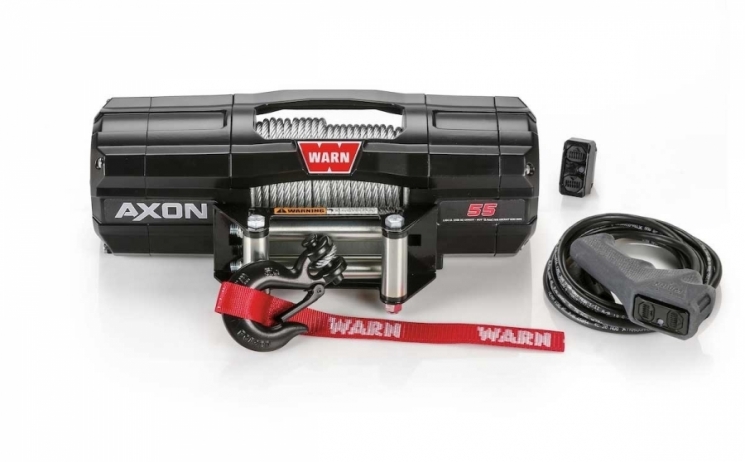 You’ll need to replace the problem gears if this is the case.
You’ll need to replace the problem gears if this is the case.
On some winches (such as Warn), there is a knob for switching between free-spool and locked operation. In some rare cases, this knob causes a blockage if it is over-rotated.
Apart from the other troubleshooting tips in this guide, having a winch that only turns in one direction might be a problem with the wiring. Check the cable from the remote switch to the contactor. The remote switch itself may be damaged.
Finally, there can be a problem with the solenoid in the contactor. Check the solenoid for rust, and if, after cleaning it, you still have the problem, you may need to replace the rusted contactor.
A slowly turning winch could be a damaged motor. It’s also possible you have insufficient battery power, so fully charge your battery. Check that the grease inside the winch gears isn’t dirty or old. If it is, you can re-grease the gears. But another reason for a winch turning too slowly is too much grease or the wrong viscosity. Ensure you use the correct type of grease and the right amount.
But another reason for a winch turning too slowly is too much grease or the wrong viscosity. Ensure you use the correct type of grease and the right amount.
Apart from the troubleshooting steps above, consider whether there’s a loose wiring connection if your winch seems to work fine sometimes yet has problems working at other times.
Off-road are the core piece of riding gear for ATV & UTV riders
Find out the best look for you
To ensure the problem is with the winch and not the wiring on your ATV, connect up a separate battery to the positive and negative of the winch. If the winch motor operates as expected, check the other electronics of your bike. Make sure the winch is correctly wired up, and try again.
If it doesn’t spin, then first check the fuse or circuit breaker of the winch if there is one. Having ruled out problems with wiring and switches, you can test the motor with a multimeter. If 12V isn’t passing through the motor when the remote switch is pressed, it suggests an issue with the motor.
If 12V isn’t passing through the motor when the remote switch is pressed, it suggests an issue with the motor.
Clean the motor. You can also remove the motor housing and check the brushes for burnt spots. If you see burnt spots, you can replace the brushes instead of replacing the entire motor.
ENDURO Camogrey
the most durable
279 EUR
AQUAMASTER Red
reliability & comfort
677 EUR
ALL SEASON Black
62 EUR
TRACE 30L Red
63 EUR
SPEEDMASTER NEW Graphite
209 EUR
Explore all
This guide is made to help you troubleshoot the most common ATV winch issues. It will also point you in the right direction on how you should go about fixing them.
ATV winches are tough.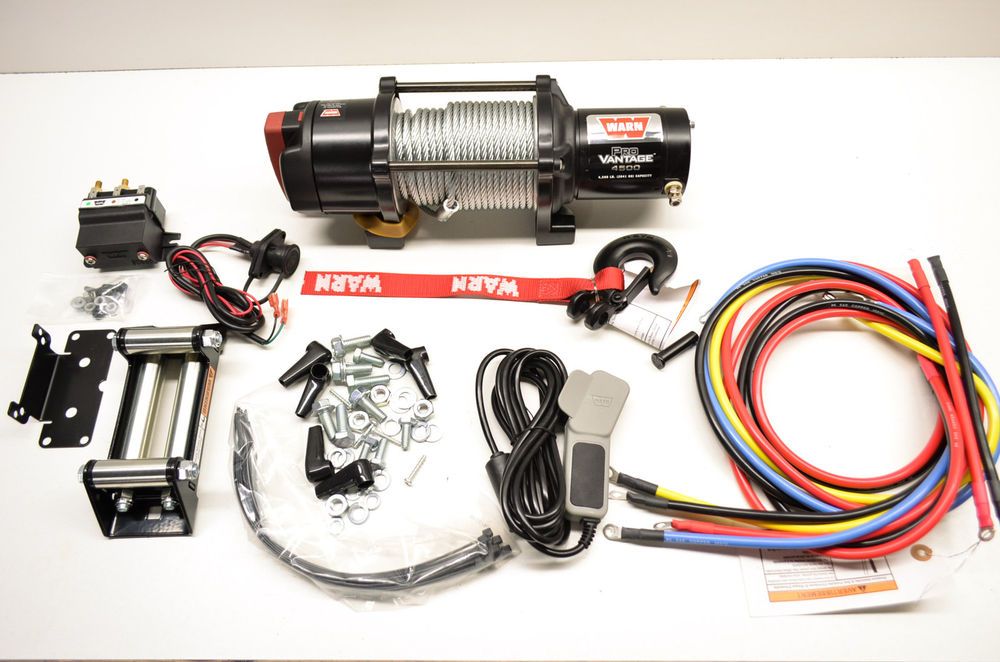 They can handle incredible amounts of use and abuse. And as long as you steer clear of the cheapest models and you treat it well with some maintenance now and then, you should expect many years of hassle-free winching.
They can handle incredible amounts of use and abuse. And as long as you steer clear of the cheapest models and you treat it well with some maintenance now and then, you should expect many years of hassle-free winching.
But from time to time, even the best will face some technical issues that need to be addressed.
Luckily, there is a lot you can do yourself to troubleshoot and repair an ATV winch that doesn’t work as it’s supposed to.
Page Contents
ATV winches are small but still powerful and potentially very dangerous. If you have any doubts or lack the basic mechanical skills to perform the troubleshooting or repairs described in this post, you should rather take it to an authorized dealer and let them take care of it for you.
A winch out of control has the potential to inflict damage to your equipment or possibly cause severe injury to yourself or others.
I’ve structured this guide so that you can start your troubleshooting based on what symptoms you are experiencing.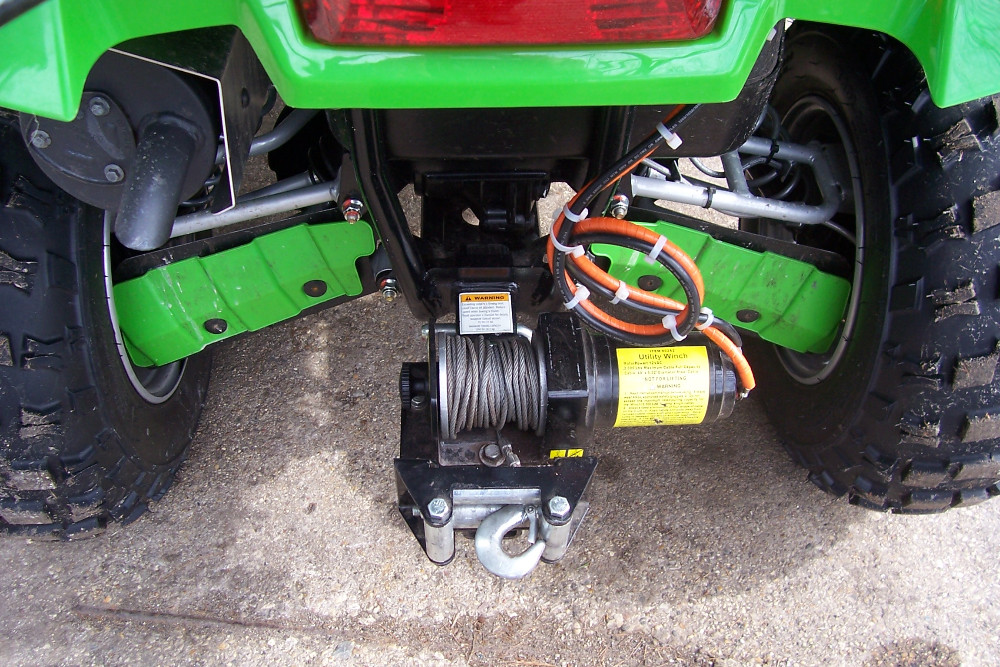 After all, that’s how it starts; suddenly, the winch will start behaving differently than it should.
After all, that’s how it starts; suddenly, the winch will start behaving differently than it should.
This will lead you to the root of the problem much faster than by just randomly testing all the different things that can go wrong.
For many of the symptoms, there are several possible causes, and some causes may give several types of symptoms.
After you have determined what’s causing your problem, you’ll find a suggested solution to the issue.
With the engine running, you push the winch switch, but nothing happens. The winch motor is not turning. Not even making a click or a buzzing sound.
The fastest way to troubleshoot a winch that does not give any sign of life is by isolating the problem.
Before you spend too much time investigating other possible causes, it’s a good idea to determine whether the problem is with the winch itself or with the wiring.
To do this, you simply need to perform this quick test:
This test will bypass all of the wiring and other electronics and will tell you if the winch motor is working or not.
Now you should know what causes to look at for further troubleshooting.
Some winches, but not all, have a circuit protector or a fuse that is meant to blow when the winch, for some reason, is pulling too much power. A circuit breaker may also trip if it gets submerged in water.
Suggested Solution: If the fuse is blown, replace it with a new one with the correct amp rating.
Suggested Solution: The circuit-breaker may need to be reset manually if it’s been tripped.
If the winch starts working again, you have fixed the problem.
If the new fuse blows again right away or the circuit breaker trips, you likely have a short somewhere.
A short happens when the positive (red) cable gets in contact with any metal part, like the bike’s frame, due to a damaged cable. A faulty switch may also cause a short.
Suggested Solution: Repair or replace any damaged cables or broken switches that are causing the short.
If you can’t find any shorts in the wiring, a short may also be inside the winch itself or in the contactor—more on that further down.
A completely dead winch often indicates that it’s not getting any power or that something is not grounded the way it should be.
Suggested Solution: Make sure the winch is wired correctly.
If it has been working correctly before and you haven’t done any modifications to the wiring, an incorrect installation should not be what’s causing your issue.
But if you’re in the process of installing a new winch now, and you can’t get any sign of life, it’s a good chance you’ve got the wiring wrong somewhere.
All winches should come with a complete wiring diagram. Make sure you follow it to the point!
The basic principles on how to do the wiring should be the same on any winch. But it’s worth noting that you will see some minor but important differences between the different brands.
Commonly, the contactor’s battery terminals have different setups, where connecting the wires wrong may lead to a dead winch.
When the winch has been installed on the bike for a while, the cable terminals may corrode or come loose.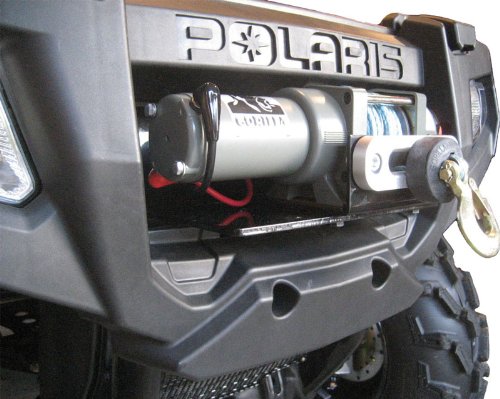
Suggested Solution: Dissasemble and clean all terminals, one by one, to make sure you have a good connection everywhere and that they are properly fitted. Any corrosion can be removed with some sandpaper so that the terminals become shiny again.
Any switch can break due to material fatigue when it’s been pushed enough times. Cheaper winches usually come with less robust switches that will break sooner.
It may also stop working due to water entering and corroding its internals. Again, the cheaper ones are often less protected and are more likely to be acting up after a few encounters with salt and water.
If a switch is damaged or corroded, it may not engage the winch at all when you push it.
There are several ways you can go about troubleshooting a bad switch:
If the bike has more than one switch to activate the winch, you should begin by testing them both to see if one of them works.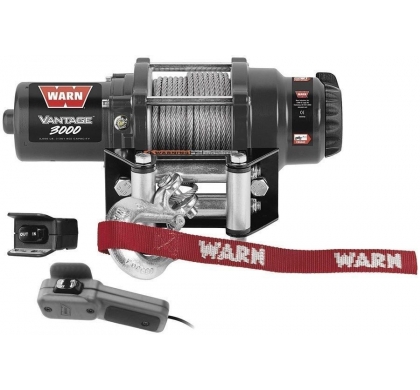
It is doubtful that both switches will fail at the same time. If one works, but you get no reaction from the other, it has likely gone bad.
If you have only one switch, you can determine if it’s defective by testing if the winch works when you bypass the switch:
Bypass the remote switch to make sure it’s not what’s causing the issue.
Suggested Solution: Replace the damaged switch.
If none of the above resolved your issue, and the system is simply just dead silent even when performing the jumper cable test, you are likely facing some sort of issue with the winch motor itself.
Another way to test the engine is by reading voltage drop across the motor. You need a multimeter to do this test.
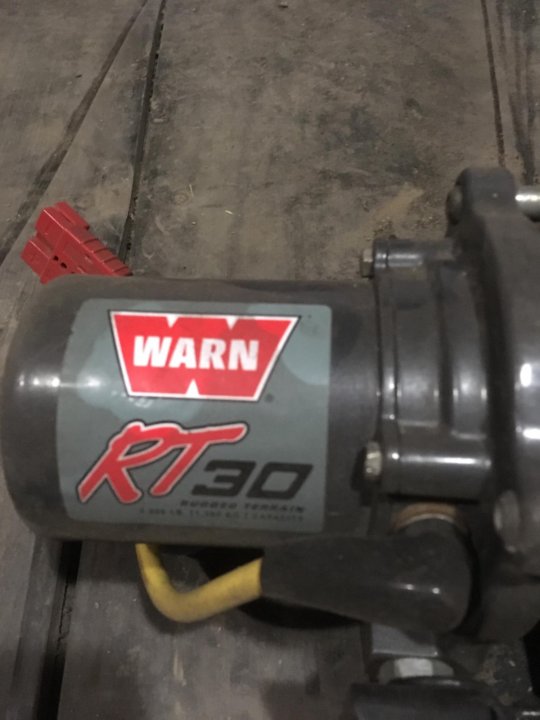
Possible Solution: Clean the motor. The electric motors inside winches are actually quite simple and robust. But they are not completely fail-proof. And sometimes dirt may enter the motor housing, creating a dead short.
Disassembling the motor and giving it a good clean may be all that it takes to bring it back to life.
Use brake-clean to clean the winch motor.If cleaning does not help, it may have a burnt coil or a short in the motor armature. This may happen if you wire the winch incorrectly or if it’s been overheated.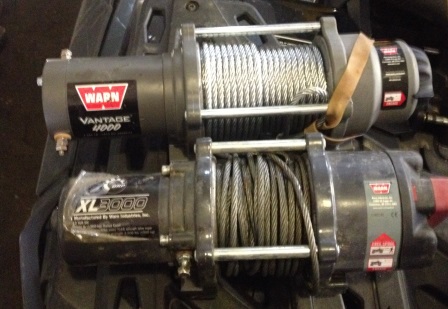
Possible Solution: Replace or repair the damaged motor. If the motor is damaged, it may need replacing or a complete rebuild performed by a specialist.
The brushes will wear over time, or they may become damaged from a damaged armature commutator.
Suggested Solution: Replace worn or damaged brushes. If the motor has some age to it, the brushes may be worn and need replacing. And if the motor armature gets damaged, it may also damage the brushes.
When you engage the winch, either using the handlebar rocker switch or a wired or wireless remote, the winch motor will turn just one way.
It may spool in but not out again, or it may spool out but without being able to spool it back in.
Before you spend time and money on more expensive parts, it’s a good idea to make sure the problem is not in the wiring, as these kinds of issues are usually cheap and simple to repair.
Again, the cause of the issue maybe some sort of wiring issue.
But before you check the rest of the wiring as described above, you should start by looking at the cable that goes from the remote switch to the contactor.
The cable itself may be damaged, or the connector at the contactor may have come loose.
Also, check if the pins inside the remote control plug have become pushed out of position or bent.
Suggested Solution: Repair or replace any damaged wiring.
If the switch is only partially defective, the winch may not go completely dead but can work in only one direction. Test the switches as described above to see if they are all working properly.
If you’ve ruled out that the problem is not in your wiring, you will likely find it in the solenoid inside the contactor.
You can compare the contactor to an ordinary relay. They have the same purpose: To prevent sending all of the current directly through the remote switch, which would require a very impractical huge switch.
The contactor is basically a huge switch that can handle high currents. It’s activated with a low current from a much smaller switch.
This contactor uses only black and red color-coding. Others use yellow and blue as well.All ATV winches will have one, and its job is to switch between sending a positive and negative electric current to the winch. This is what determines which way the engine turns.
Inside the contactor, you’ll either find one two-sided or two single-sided solenoid magnetic coil switches. One is activated when pressing the in button, and the other is activated when pressing the out button.
When the solenoid works as it should, it will physically move when it’s being activated. This is what makes the audible clicking sound when you activate the winch switch.
A two-sided solenoid will have four battery cable connections, where one side is wired + to – and the other side is wired – to +. These are often marked with red, black, blue, and yellow, matching the wires that go on them. Some winches use only red and black color coding.
Solenoids do, however, tend to break or get stuck. When it’s stuck, you won’t get it to switch between positive and negative current.
Suggested Solution: You can try gently tapping the contactor with the handle of a screwdriver to free it up. But this will just be a temporary fix. It may soon get stuck again until you replace the contactor with a new one.
Because of the wet and muddy conditions that lead you to get a winch in the first place, the solenoids may rust over time. Rusted plungers will not move freely, so that you don’t get proper contact.
When you take off the contactor cover, you will quickly see if corrosion is what’s causing your issue.
Suggested Solution: Replace rusted contactor.
You can test the solenoid by hooking a test light on the cables that go to the winch.
Test first with the blue, then with the yellow. If you don’t get a light with one of them, you likely have a bad solenoid.
A good way to protect your new contactor is by slathering it with dielectric grease and make sure it’s placed up high and dry.
This one is widespread, and when it comes to troubleshooting, it has a positive side to it:
When you hear an audible click sound, you know that the contactor is getting power when the switch is being pushed. This means that everything up to the contactor, including the switch, should be fine.
Suggested Solution: Start by making sure the battery is fully charged and has a voltage reading of at least 12,4V. Remove the battery terminals and clean them to ensure a proper connection.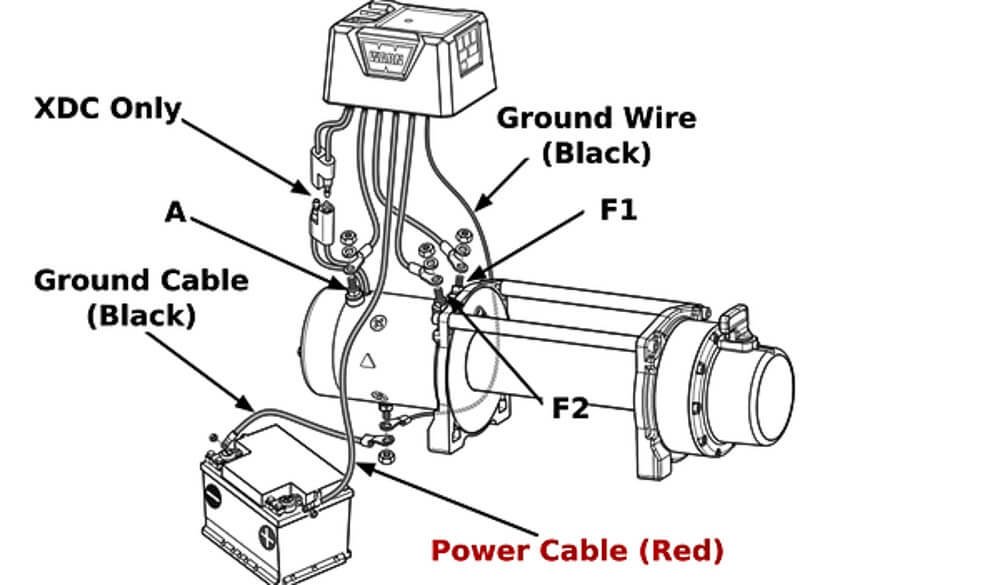
Also, make sure that the grounding cable on the winch motor housing is properly fitted.
This leaves either the winch motor or the contactor.
When you are in a situation like this, you want to rule out one or the other. Again, the easiest way to go about doing this is by performing the jumper cable test as described above to see if the winch is working or not.
If the winch works as normal when you power it with jumper cables, the issue will very likely be in the contactor.
The solenoids may be firing up, but they are not connecting. This may be due to corrosion or damage from overheating.
Suggested Solution: In this case, the contactor needs replacing.
If the motor does not turn as normal when being fed power directly from the battery, you know it has some issue.
The possible causes for it not working and procedures for troubleshooting and fixing are the same as when the winch is completely dead.
If the winch works fine sometimes, but other times it just makes a clicking sound, the cause of the issue will likely be the same as when you always get clicking, and the winch never works. Just follow the steps above, and you should find your problem.
If the winch works sometimes, but other times is completely dead, you are more than likely facing a loose cable, creating a bad connection somewhere. Go over the wiring, and make sure nothing has come loose.
You may find that the winch turns but does so very slowly. It seems to seem to be down on power or may even stall out when pulling loads that it normally should manage just fine.
This may be due to a damaged motor, as described above, where you just get a clicking sound. Other possible causes are:
If the cable or rope, for some reason, is not spooled onto the drum in the correct direction, it will work against the automatic brake. This will be like trying to drive your car with the handbrake on.
This will be like trying to drive your car with the handbrake on.
Suggested Solution: Spool the cable or rope all the way out, and re-install it in the correct direction. There should be a sticker indicating correct drum rotation.
Suggested Solution: Fully charge the battery. Replace it if the battery is damaged. Clean terminals.
If the battery keeps draining, even after replacing it, the issue may be with the bike’s charging system.
Related: 10 Reasons Why Your ATV Battery Keeps Draining (Going Dead)
Suggested Solution: Please refer to the procedure for re-greasing the gears when the winch won’t free spool.
If you put too much grease in the planetary gears, have used the wrong grease (too thick), or if the grease has gummed up due to water contamination and age, the gears will not turn as freely as they should.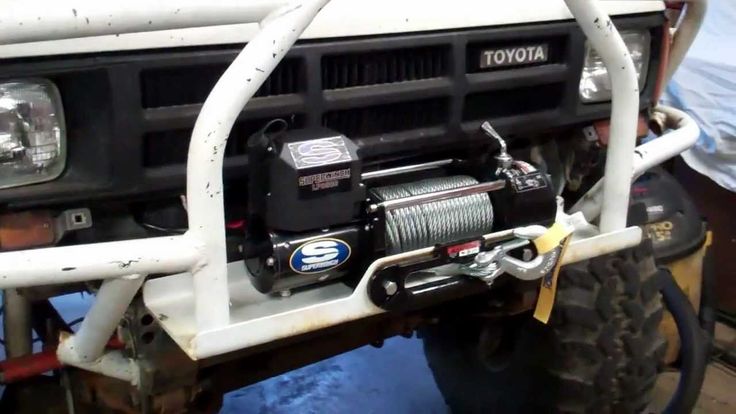
Suggested Solution: Remove old grease, apply correct amounts of new grease.
Brand new planetary gears with factory grease.If your winch cable has become all jammed up and goes in no matter which way you run it, this little trick may get you out of a pinch.

This works most of the time. Other times it just makes the situation a lot worse.
Another tip is to put the winch in a free spool position and use another winch to pull it out.
While some heat is normal whenever the winch motor is being put under a heavy load, you may find that it gets abnormally hot after being used for a short time.
Also, note that operating the winch over a long period may also overheat it, with the risk of permanently damaging the motor. Take breaks to allow the motor to cool down.
Suggested Solution: Remove the winch motor end cap. Use some fine sandpaper or emery cloth and give both the motor end shaft and the inside of the bushing a light rub.
Suggested Solution: Replace winch motor.
The motor may be turning, but you cannot get the winch to engage. Or you may have problems getting the winch to disengage to the free spool position.
When the engage lever does not budge, the problem can be with the knob/ lever itself or with the gears; it operates.
Suggested Solution: Clean, remove rust and apply new grease.
The lever needs to come out to be cleaned, and any rust must be removed. Some levers can be removed without disassembling the winch.
Other winch models require some disassembly for the lever to come out.
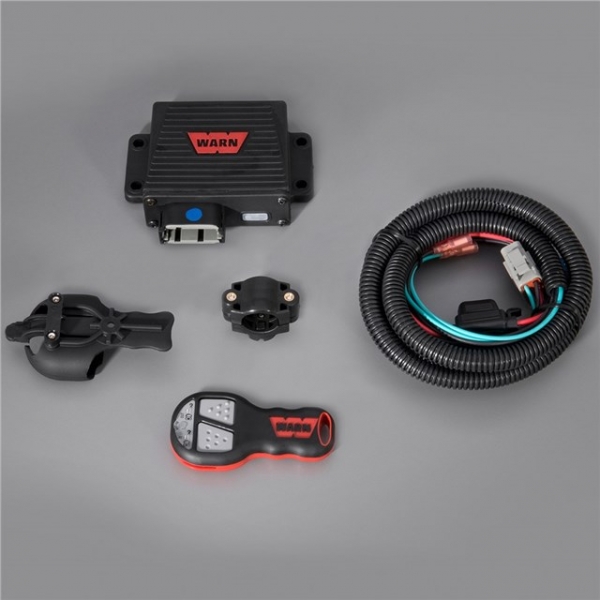
Now that your winch is already disassembled, it may be a good idea to service the gears while you are at it.
Suggested Solution: Clean and remove corrosion. Apply oil.
Inside the winch, on many models, there is a ring gear that needs to slide freely sideways for you to be able to engage and disengage the winch.
If this gear or the outside diameter of the winch housing it slides up against starts to corrode, it will become stuck either in the engaged or disengaged position.
Dirt and other debris won’t help the situation either.
Disassemble, clean, remove rust, lightly coat gear and housing surface with oil, and reassemble.
It may also be hard to get this ring gear to slide if someone mistakenly has applied grease on the outside of the gear or to the inside of the gear housing.
While the other winch gears should be lightly greased with some CV-joint type grease, this is not true for the ring gear.
The grease will create too much drag, making the gear hard to operate. A light coat of oil is all that should be used here.
If the gears have become damaged somehow, you may not be able to budge the engage lever at all. Using the winch to tow someone, or trying to yank on someone that’s stuck, is a common rookie mistake that is likely to strip the gears.
Suggested Solution: Replace damaged gears.
You need to disassemble the winch and inspect for damaged gears. All damaged parts can be replaced to get the winch back in working order.
Warn, and many other ATV winch manufacturers use a design where you need to twist a knob at the end of the winch housing to switch between free-spool and locked position.
However, this design seems to be a bit more fragile than the angled knob often seen on larger winches. Some models have issues with the knob getting stuck due to bad design.
Some models have issues with the knob getting stuck due to bad design.
What happens is that the knob gets stuck when it is over-rotated, and the clutch bar gets hung up on a small plastic sliding ramp that’s part of the design.
You can disassemble the knob to put everything back in place, but if your winch is affected by this issue, you will soon get it stuck again if you are not careful.
Suggested Solution: Get upgraded parts from the manufacturer.
If you face issues with engaging or disengaging a winch that uses this type of knob, I suggest taking it to the dealer to get upgraded replacement pars if it’s still under warranty.
Even if you managed to get the winch to disengage properly, it very hard to free spool. It requires a lot of force to pull out the cable/rope.
If you engage or disengage the winch under load, it may create a burr outside the ring gear. This creates mechanical friction and makes it harder to free spool the winch.
This creates mechanical friction and makes it harder to free spool the winch.
Suggested Solution: Use a file and gently remove any burr. Apply oil before reassembling.
The sliding ring gear and the inside diameter of the winch housing that it slides against should not be greased.
Not only does this makes it hard to engage the winch, but it will also create drag, making it hard to free spool the winch.
Suggested Solution: Remove grease, apply a thin layer of oil.
If you winch at an angle, all the cable will stack up on one end of the drum.
This may not only get the drum stuck, but it may also damage the drum itself by forcing the sidewalls outwards.
Disassembled winch drum.Suggested Solution: Disassemble and try to straighten the drum walls. If it cannot be repaired, the drum needs replacing.
Suggested Solution: Try troubleshooting why it won’t engage as described earlier.
Whether it is due to using the winch, the clutch not being completely engaged, or from incorrect use like towing or yanking, the gears may be stripped.
Inspect all of the winch gears.Suggested Solution: Disassemble the winch to inspect the gears, and replace them if needed.
ACTION !
Use to buy and install Starline
special
price
News
31 08.2022
Skoda
Skoda Yeti Skoda Yeti -which brand and signaling model with autozapa are set?
0003
"How to choose the alarm for the motorcycle"
more
13 06.2022
For owners of the Porsche
Mounting Center, the Avancar installation center provides various services for the car brand car with a wide variety of modern functions.
more details
09 05.2022
New Hyundai Creta and Solaris
Have you bought a new Creta or Solaris, but the factory, original rear view camera is missing? Our installation center "AvanCar" is at your service - installation of a rear view camera on KIA and Hyundai Creta, Solaris 2021 - 2022 cars with connection to the standard screen of the factory radio, read more
more
NOVOSIBIRSK, st. Yakusheva 21/1
Tel: +7 (383) 380-76-01, Tel: +79538869434
Repair and maintenance of the WARN Winper for ATV Polaris for ATV Polaris List of
9000 9000Service Parts Lists WARN WINCH: RT/XT 25/30
( replacement part list see page 18 )
download online catalog==>>
List of replaced spare parts for Warn A2500 A2500 2.5CI
Instruction and maintenance of WARN A2500
download == >>
9000
IP Makeev - Repair and maintenance of the winch for ATV POPORAS , Yamaha, Arctic Cat, Lynx, Ski-Doo, BRP and imported ATVs in Novosibirsk.
tel. 8(913)379-0706
Block
On the AVANCAR website you can always get very detailed information about the latest StarLine anti-theft systems, about the various types of services we provide, find useful information in the form of articles and tests, reviews of new products in auto electronics, security systems , comfort. Where is the high-quality installation of car alarms in Novosibirsk Taos. Read reviews about us and the products we offer. USB, AUX and Bluetooth Buy Starline at a discount. Honda Elita GSM Vezel Anti-theft system for a car - install an anti-theft system in Novosibirsk Black Bug, TEYES author's anti-theft complex, replace the monitor and install Android on Mercedes. New Hyundai Creta 2 - installation of additional equipment Hyundai Solaris - install rear view camera StarLine A93 in Novosibirsk TAOS subwoofer stealth Yeti Changan
Yeti Honda - radio replacement Harley Davidson Novosibirsk Motorcycle alarm Chery Hyundai Creta - install towing hitch (towbars) certified installation center BRP Can-Am Outlander winch for WARN 4500 Pro Wantage
BRP Can-Am Outlander winch replacement for WARN 4500 Pro Wantage from Category A on Vimeo. nine0003
Quite often, hard off-road lovers complain about the insufficient efficiency (power) of the front winch. It is not always possible, and even time, to hook the cable through the block and thereby increase traction. The simplest option, as it turned out, lies on the surface: replacing the winch with a more powerful one. But the apparent simplicity of the solution is hampered by the technical design of the standard mounting plate for the BRP CanAm Outlander G2 winch. The Category A company, at the numerous requests of athletes and amateurs, has developed a kit for installing the WARN 4500 ProWantage winch. A reasonable question arises, what to do with a regular winch, is it already on the ATV? Category A has developed a kit to mount the winch on the rear of the ATV, using the "standard" one, which becomes unnecessary after installing a more powerful winch in front.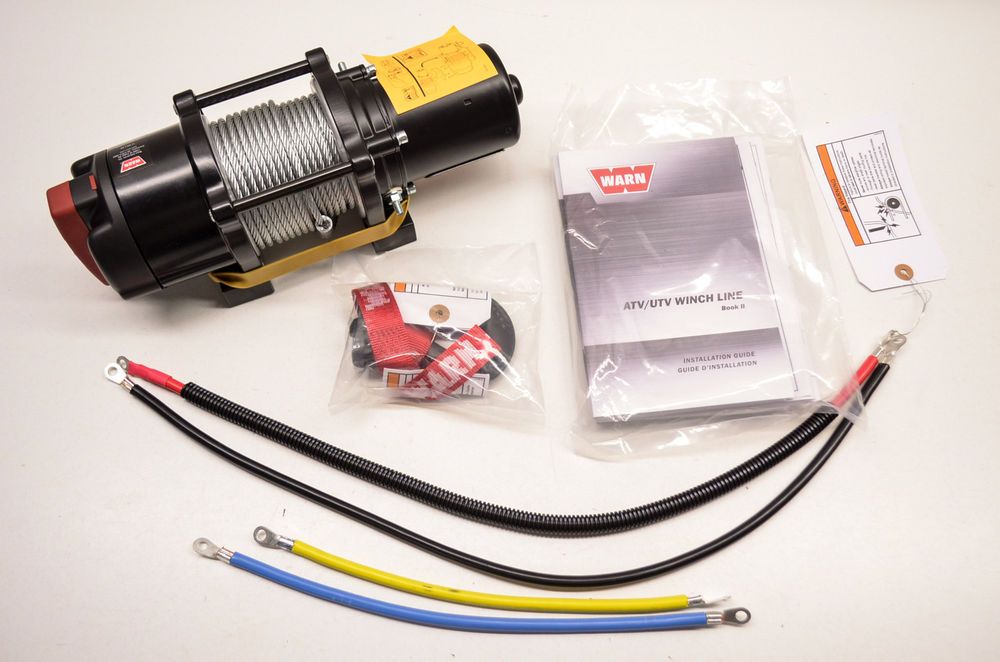 nine0003
nine0003
Development stages:
Front winch.
Rear winch.
For rear winch replacement and installation, contact Category A.
Navigator Garmin ZUMO 590
Installing a Garmin ZUMO 590 navigator on a BRP snowmobile
09/25/2015
Replacing the stock headlights Can-Am Outlander G2 with VisionX
The standard light suits not everyone, what should I do?
02.